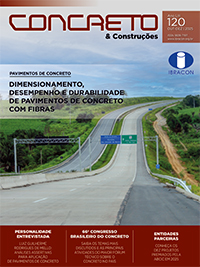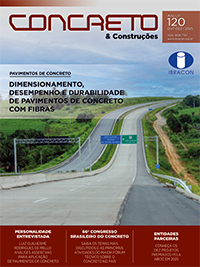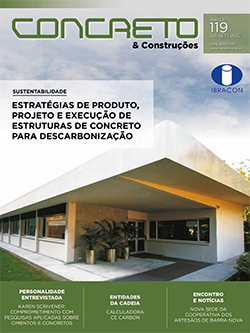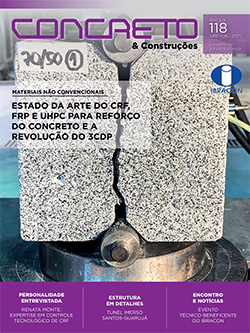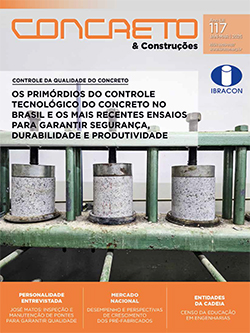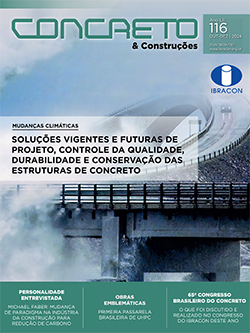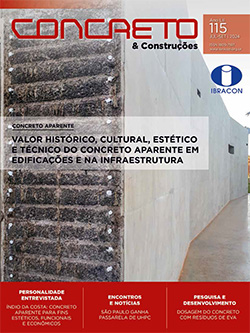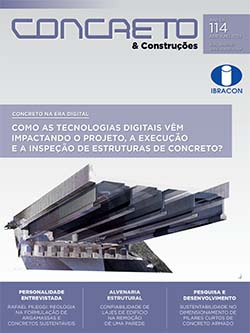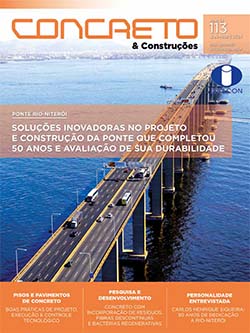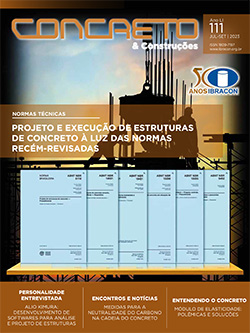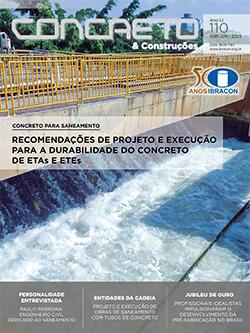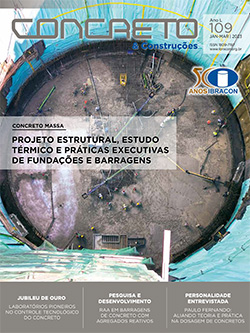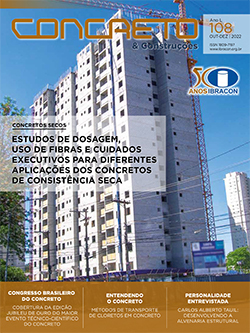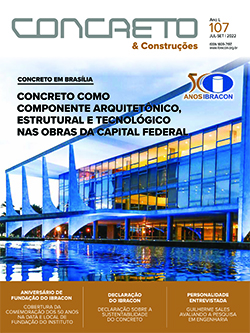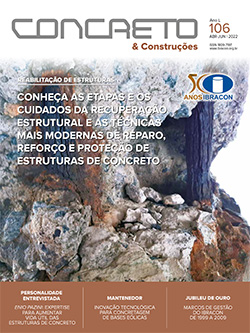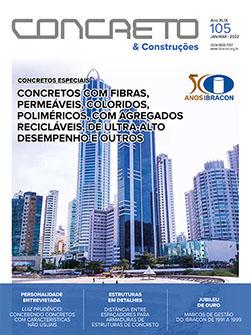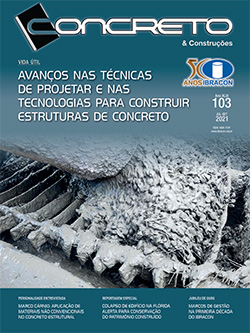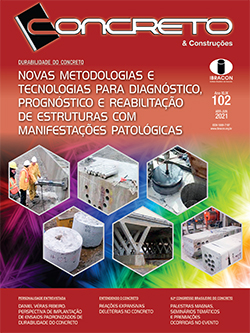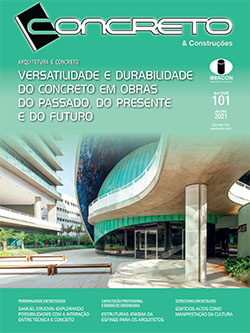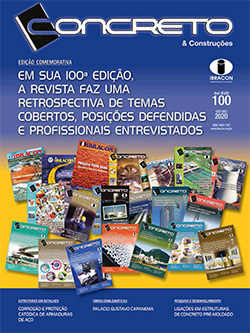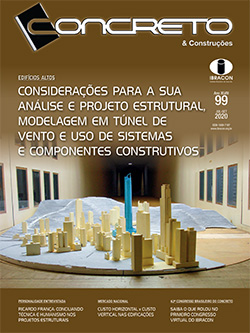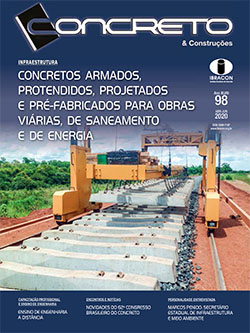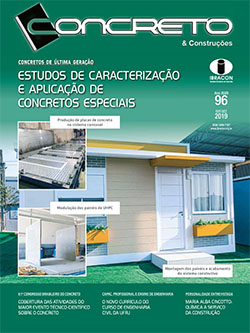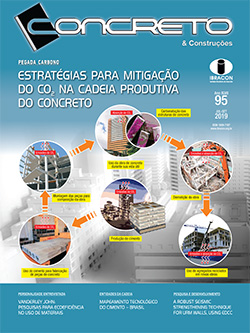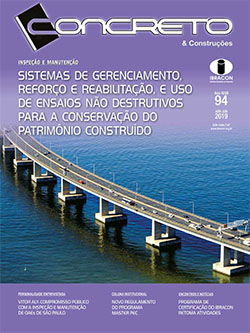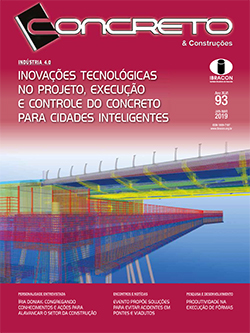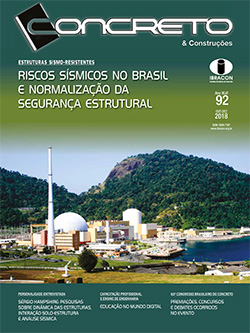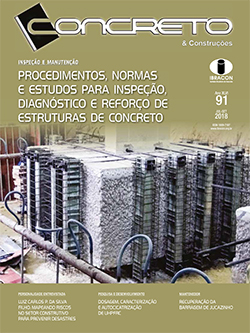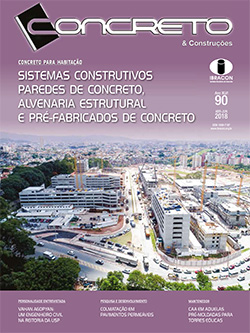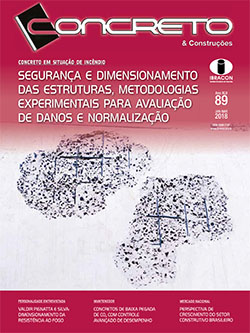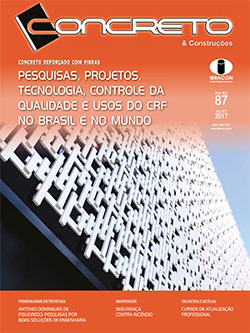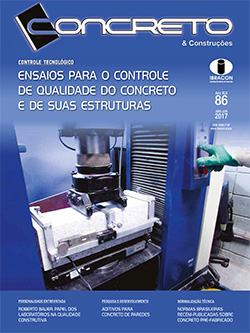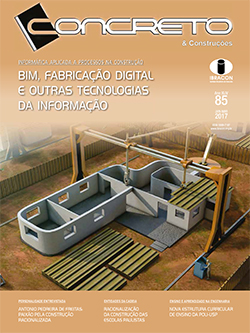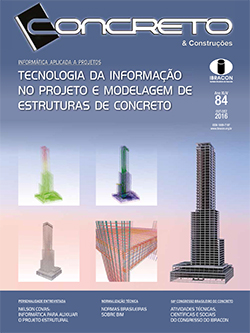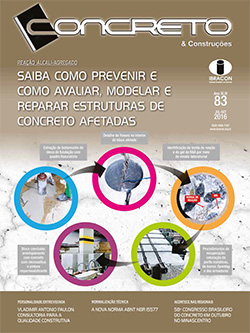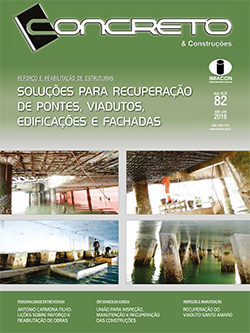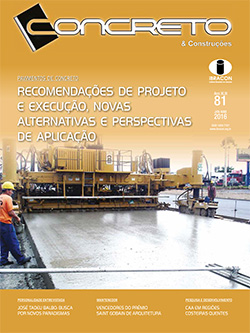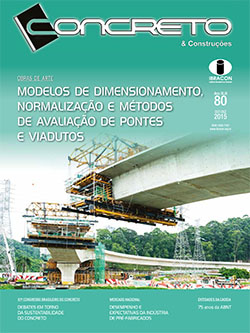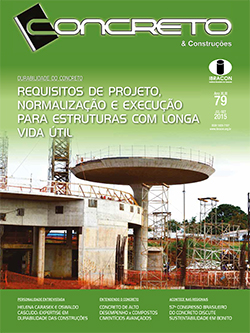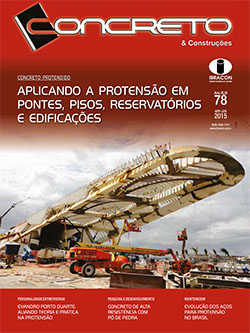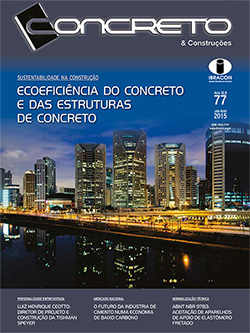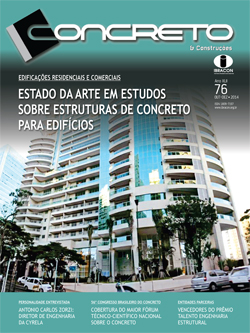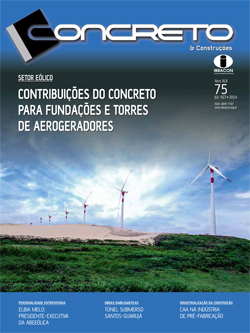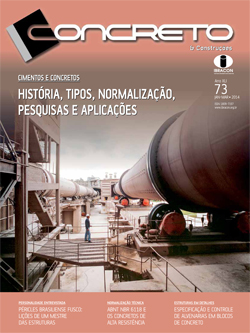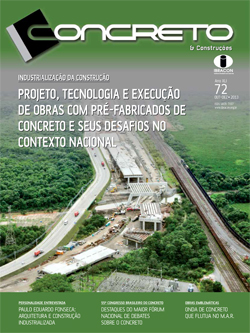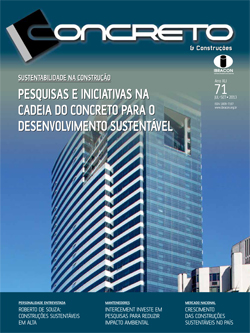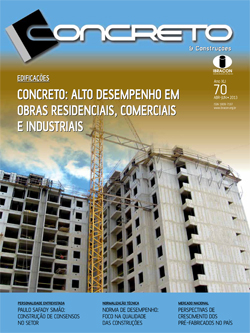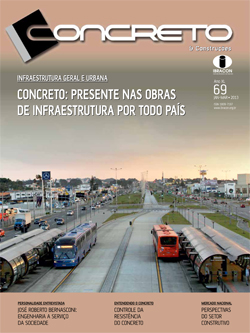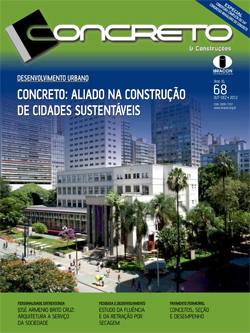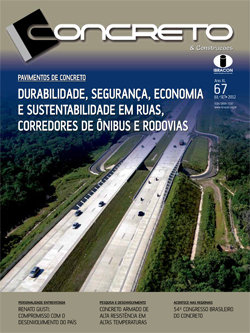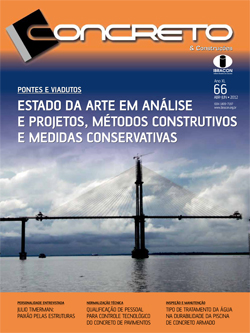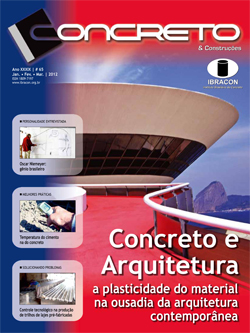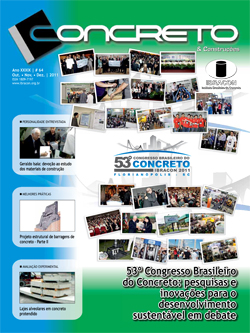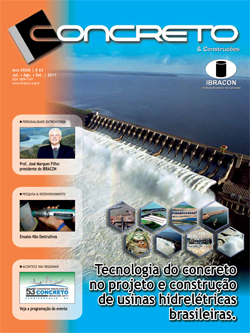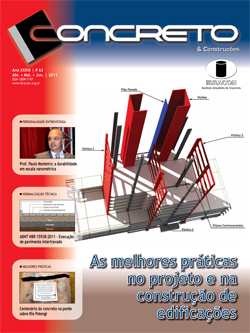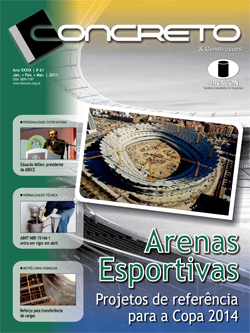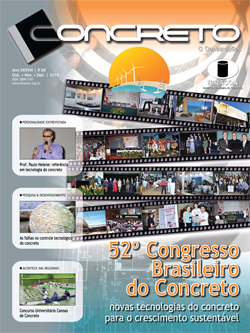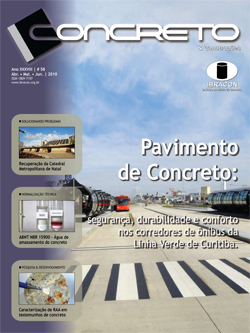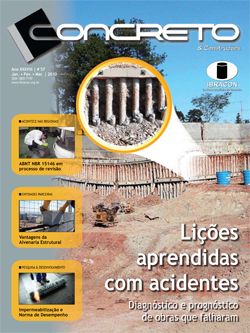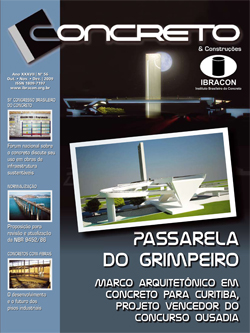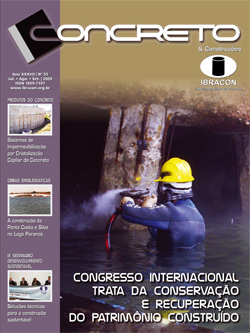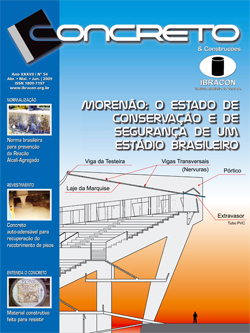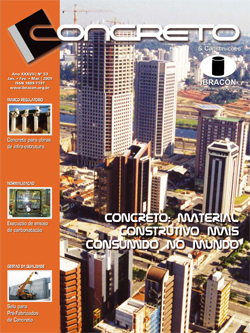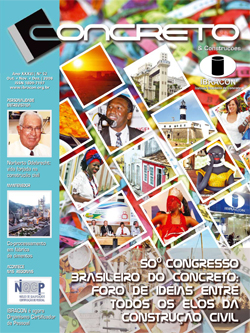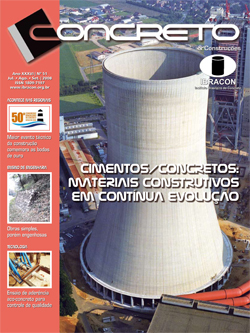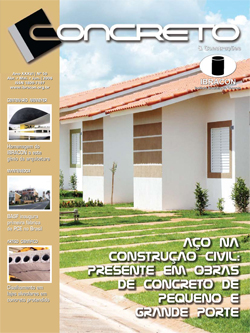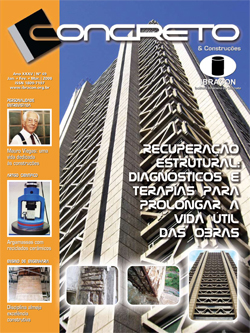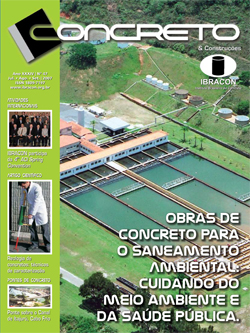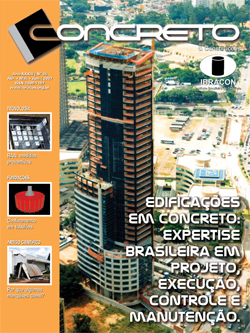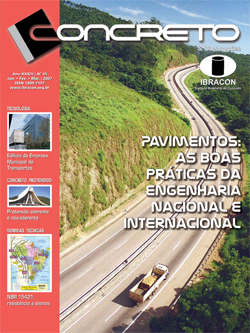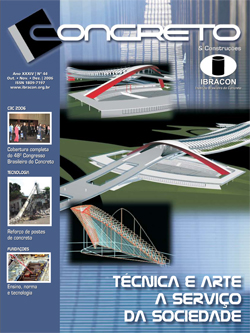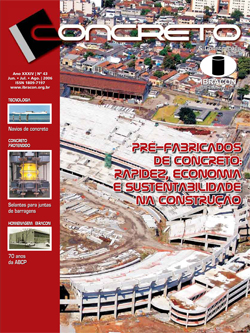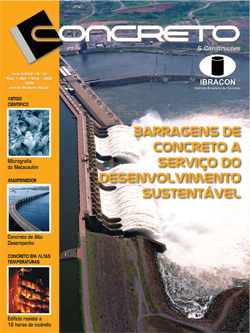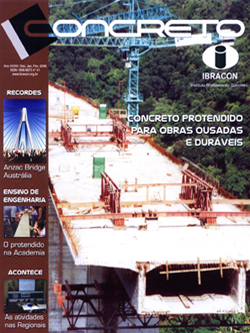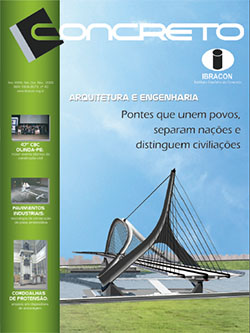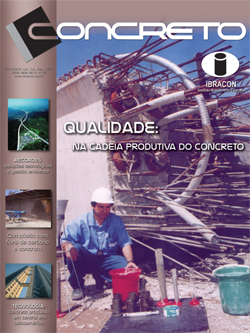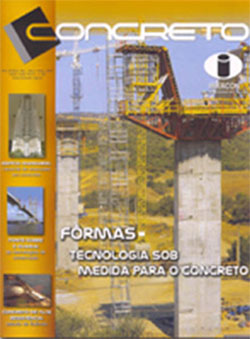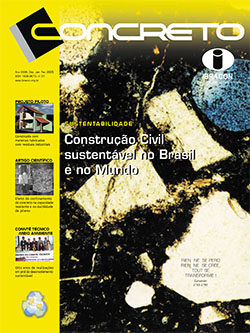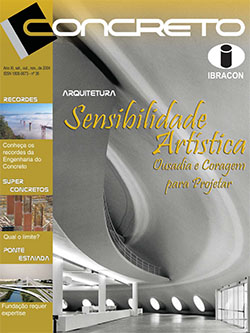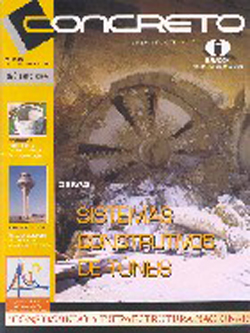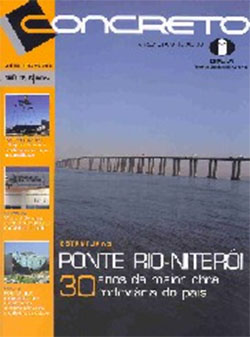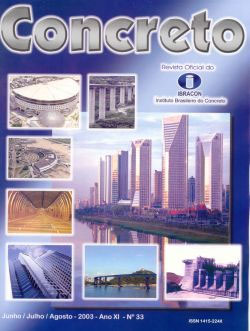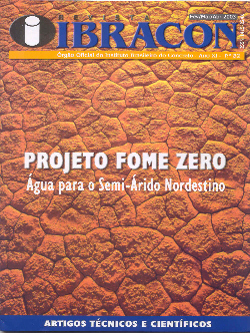On the Experimental Determination of Concrete Compressive and Tensile Strengths
Palavras-chave:
compressive strength, testing, apparatus & methods, Discrete-element modelling, Constitutive relationsResumo
For design purposes, before failure, concrete is often modelled as a linearly elastic, isotropic, and homogeneous material. DIN codes initially used cubic samples to assess uniaxial compressive strength, but friction effects along loading plates led to their replacement by cylinders. Evidence that strength varies with the casting direction raised doubts about the implicit isotropy assumption. Measurement of the compressive strength in vertical and horizontal directions requires properly supported cubic samples. As an anti-friction layer, grease performed better than other alternatives and was chosen for discrete element method (DEM) simulations of experimental results. Cubic specimens provided with grease led to nearly the same compressive strength as cylinders or prisms, determining the casting direction's influence. DEM simulations also suggest that cubic samples can replace conventional splitting tensile strength tests, providing tensile strength data in both directions.
Downloads
Referências
BANDEIRA, M. V. V.; LA TORRE, K. R.; KOSTESKI, L. E.; MARANGON, E.; RIERA, J. D. Influence of contact friction in compression tests of concrete samples. Construction and Building Materials, vol. 317, 2022, 125811.
KOTSOVOS, M. D. Effect of testing techniques on the post-ultimate behaviour of concrete in compression. Matériaux Constr., 1983.
KOSTESKI, L.; ITURRIOZ, I.; GALIANO, B. R.; CISILINO, A. P. The truss‐like discrete element method in fracture and damage mechanics. Engineering Computations, vol. 28, no. 6, 2011, 765-787.
KOSTESKI, L. E.; MARANGON, E.; RIERA, J. D.; KECHE DOS SANTOS, F. J.; BANDEIRA, M. V. V. Assessment of concrete anisotropy in relation to the direction of casting. Rev. Sul-americana Eng. Estrutural, 2018.
KOSTESKI, L. E.; MARANGON, E.; RIERA, J. D. Assessment of concrete anisotropy by means of compression and indirect tensile tests. Rev. IBRACON Estruturas e Mater., 2019.
KUMAR, S.; MUKHOPADHYA, T.; WASEEM, S. A.; SINGH, B.; IQBAL, M. A. Effect of Platen Restraint on Stress–Strain Behaviour of Concrete Under Uniaxial Compression: a Comparative Study. Strength Mater, 2016.
MIN, F.; ZHANHU, Y.; TENG, J. Experimental and Numerical Study on Tensile Strength of Concrete under Different Strain Rates. The Scientific World Journal, vol. 2014, Article ID 173531, 2014, 11 páginas.
RIERA, J. D.; MIGUEL, L. F. F.; ITURRIOZ, I. Assessment of Brazilian Tensile Test by means of the truss-like Discrete Element Method (DEM) with imperfect mesh. Engineering Structures, vol. 81, 2014, 10-21.
ROCHA, M. M.; RIERA, J. D.; DE KRUTZIK, N. J. Extension of a Model that Aptly Describes Fracture of Plain Concrete to the Impact Analysis of Reinforced Concrete. In: Int. Conf. and Structural Mechanics in Reactor Technology, SMIRT 11, Trans. Vol. J. Tokyo, Japão, 1991.
ROCCO, C.; GUINEA, G. V.; PLANAS, J.; ELICES, M. Review of the splitting-test standards from a fracture mechanics point of view. Cement and Concrete Research, vol. 31, 2001, 73-82.
VIDAL, D. M. C.; BANDEIRA, V. V. M.; LA TORRE, R. K.; KOSTESKI, L. E.; MARANGON, E. Numerical and experimental evaluation of the anisotropic behaviour and boundary condition of a structural concrete. Constr. Build. Mater., vol. 260, 2020.
WANG, J.; YU, X.; FU, Y.; ZHOU, G. A 3-D meso-scale model and numerical uniaxial compression tests on concrete with consideration of the friction effect. Materials, vol. 17, no. 5, 1024, 2024.
Publicado
Edição
Seção
Licença
AUTORIZAÇÃO PARA PUBLICAÇÃO DE ARTIGO ou MATÉRIA JORNALÍSTICA |
|
|
|
|
|
LICENÇA PARA UTILIZAÇÃO DE OBRA INTELECTUAL (Autor)
Clausula 1 – Por este instrumento particular, o LICENCIANTE abaixo assinado autoriza ao IBRACON a utilização de obra de sua autoria, bem como dos elementos constantes nela, sem caráter de exclusividade, em publicação impressa, com prazo de vigência ilimitado, a contar da data de sua assinatura.
Clausula 2 – Esta licença é concedida a título gratuito, onde o LICENCIANTE autoriza também a LICENCIADA a incluir na publicação publicidade de terceiros que sejam compatíveis com o assunto da obra ora licenciada.
Clausula 3 – O LICENCIANTE garante não ter cedido a terceiros os direitos patrimoniais da obra ora licenciada, bem como dos elementos constantes nela.
Clausula 4 – Em caso de coautoria, o LICENCIANTE assina como um dos autores e concorda em informar aos demais da licença concedida.
|
|
|
Licenciante (nome completo em letra de forma):
|
|
|
Identificação(s) do(s) Artigo(s) ou da(s) Matéria(s) Jornalística(s):
|
|
|
CoAutores [nome(s) completo(s) em letra de fôrma]:
|
|
|
Endereço:
|
|
|
Sócio IBRACON nº |
Categoria: azul ouro diamante |
|
|
|
|
|
|
---------------------------------------------------------------------------------------
Licenciante
, de de 2021
|
Solicitamos a gentileza de preencher este formulário de LICENÇA PARA UTILIZAÇÃO DE OBRA INTELECTUAL. Por favor, encaminhar uma cópia assinada para o tel/fax 55 11 3733-2190, ou via e-mail (imprescindível assinatura, use scanner) para fabio@ibracon.org.br |

